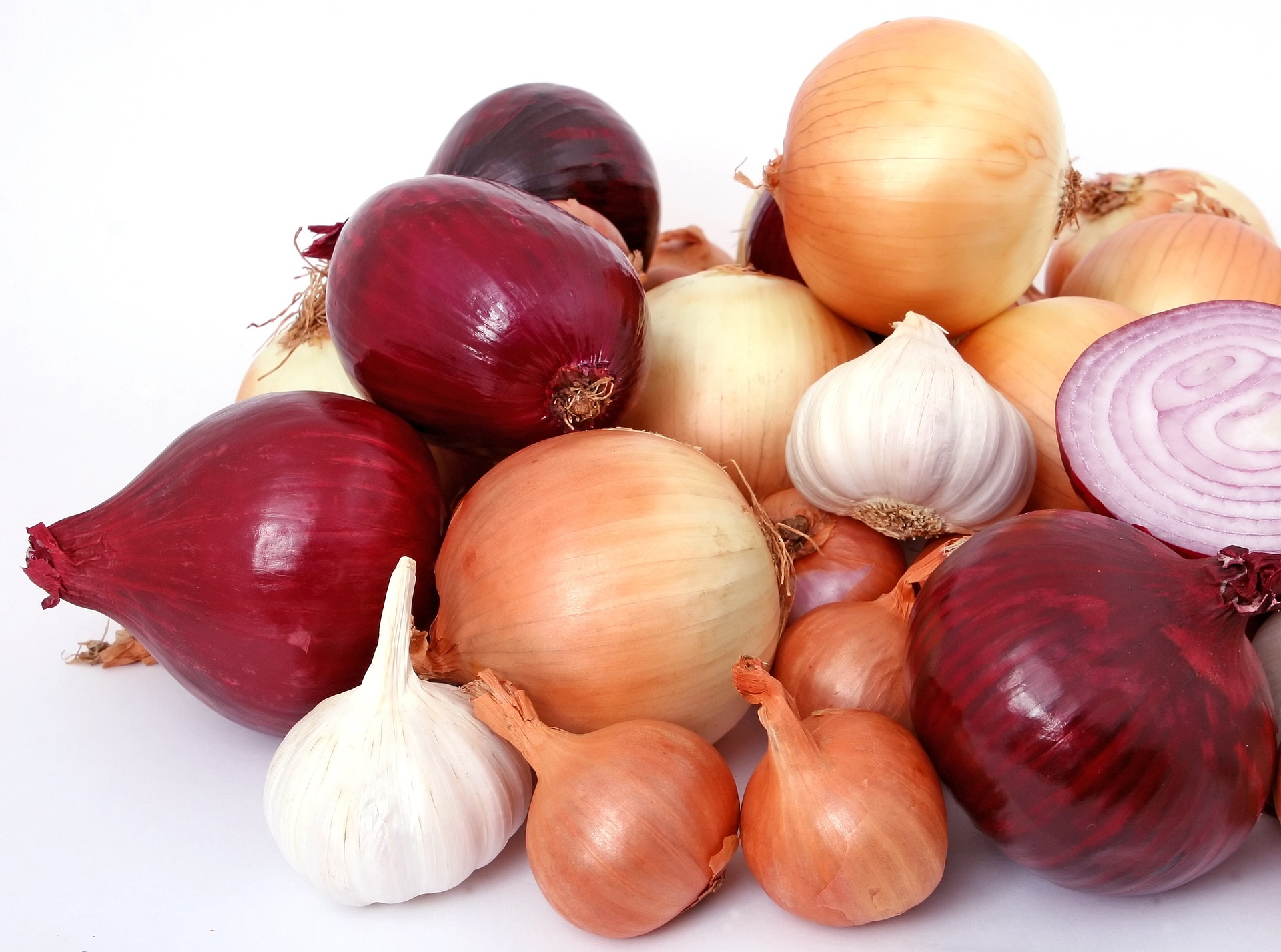
It isn’t easy to think of a dish that doesn’t start with – or at least include – cooking onions in one way or another. Unlike most vegetables, some form of onion is used in every cuisine across the globe, in millions of dishes in countless forms of preparation. Raw, sauteed, fried, braised, or grilled, these beautiful bulbs provide dimension and a sweet, spicy, umami flavor that you just can’t replicate with any other ingredient.
The thing about onions, though, is that there are many, many kinds, and knowing which variety to choose can be confusing. From long and papery green onions with their signature spice to more mild and sophisticated shallots with their hint of garlic, onions are diverse in their culinary gifts, and it’s essential to take advantage of that. Too often, home cooks make the mistake of gravitating toward a bag of yellow onions at the grocery store and call it a day, using these for salsas, pasta sauces, stir-fries, and every dish in between. And while yellow onions are fabulous (more on this in a moment), they are simply one type in a whole family of onions that provide their own signature flavors and enhance dishes in their own unique ways.
The next time you find yourself at the grocery store, consider the meals you have planned for the week, and take a minute to ask yourself – which onion is best for your dish? Are you serving them raw or cooked? How you cook onions greatly depends on the type you choose, so are you planning a braise? A deep fry? A saute?
Put down that bag of yellow onions (maybe), and read on to find out which onion you want to use for your dish.
Yellow onions

As previously stated, yellow onions tend to be the default onion most people reach for, and it makes sense. These generous little beauties can do a lot of culinary legwork and please most palates with their mild flavor that falls just between a sweet onion and a red onion. Yellow onions are also high in starch, which makes them able to withstand high temperatures and longer cooking times without falling apart. This makes them perfect for soups, braises, or anything in the slow cooker or pressure cooker you might have on the menu.
Red onions

Perhaps the second-most popular onion reached for in American grocery stores is the classic red onion. This gorgeously-hued variety is best in raw preparations in dishes like salads, sandwiches, and guacamole. Cooking with red onions also provides a real depth of flavor, so long as it’s done properly. They are absolutely beautiful when cooked briefly under dry heat, used as a pizza topping or grilled in rings, and stacked atop a ribeye steak or chicken kabob.
We especially love red onions after they’ve been pickled with lime juice. You can find our favorite recipe here.
Green onions

This bright, zippy onion variety has many aliases. You might refer to this particular variety as green onions, scallions, or spring onions. Similar in their peppery flavor to chives, the deeper green tops of green onions are most often used as a garnish or raw ingredient in things like salad dressings or spreads. The whitish, more crispy part of the green onion located just above the root is also delicious raw but stunning after a quick sautee in butter and garlic, served atop your favorite protein or vegetable. So, while these stemmy beauties are most often seen raw, cooking with green onions is an absolutely delicious way to go.
Sweet onions
Sweet onions are aptly named for their sweet, mild flavor. They are neither as spicy as red onions nor as sturdy as yellow, which makes them a more delicate variety known for their ability to accent and not overpower a dish. More fragile than other varieties, sweet onions should not be braised or cooked for an extended length of time as they will disintegrate. However, they’re exquisite in a quick cook, such as a deep fry, and make for the absolute best onion rings. You can also use sweet onions in a stir-fry or quick pasta sauce, provided it’s not a slow braise.
White onions
Suppose you make a lot of Mexican food (as you should). In that case, you probably already know that white onions are by far and away the best choice for taco toppings, Pico de Gallo, a garnish for albondigas, or sprinkled atop deliciously homemade tamales. White onions are crunchy, zesty, fresh, and have a bite that doesn’t linger too long on the palate. These onions have a perfect, fresh, and crisp balance to counter generously spiced foods such as Mexican or Indian dishes.
Shallots

There’s something about shallots that feels more sophisticated than other onion varieties, and it’s hard to put a finger on the reason. Perhaps it’s simply their higher price point or slightly more high-maintenance exterior. But it’s probably their subtler, more nuanced, and complex flavors with hints of sweet onion swirling with deliciously peppery garlicky notes. It may also be shallot’s versatility that makes them special. Shallots can do just about anything. They’re perfect in raw preparations, sliced thinly on toast or mixed into a salad. They’re delectable roasted or sauteed, complimenting any soup or pasta. We also love these fried and served on top of a hearty steak or gorgeous chicken dish swimming in velvety cream sauce.





